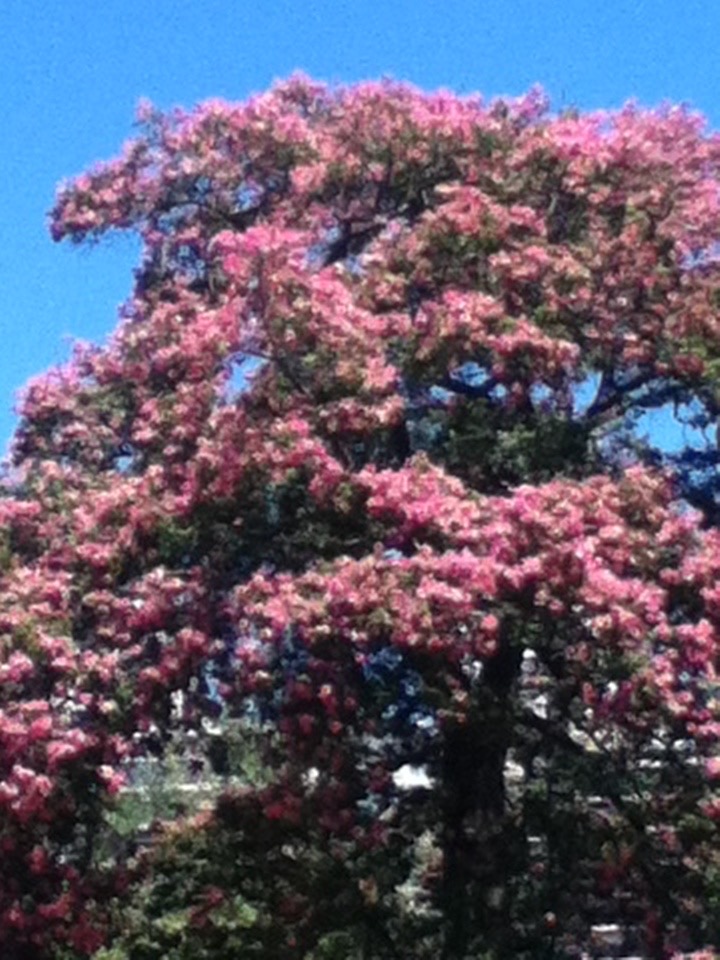 |
| Tango Attire in Buenos Aires |
LOVE LETTER TO BUENOS AIRES
Buenos Aires is a thriving, elegant city situated at the end of the world. It doesn't seem possible that this phenomenon of a metropolis exists on the outset of the North American time zone (five hours earlier than San Francisco) so very far away from everything. It's like it just popped up, with lavish Paris style buildings, lush and well-thought out parks, magical tree buttresses the size of Volkswagens, fast drivers but patient citizens, grocery stores with vegetable sections that could vie for a Bon Appetit centerfold, each tomato, avocado, head of lettuce meticulously placed, tempting a caress.
 |
RESTAURANTS
Restaurants, too many to count, serving grass fed beef you can cut with a spoon, salads with up to five 'gustos' or additions: tomatoes, onions, corn, peas, carrots, beets. Old world waiters in starched white shirts, black bowties and waist-high aprons—even at the smallest coffee shops—seating you with a nod or a flourish, then standing by as you ponder the menu. The city's fixated on food, with the popular parrilla leading the way, followed by a concentration of Italian eateries from high end to pizzeria. Every other food appears too, with plentiful choices. Argentina's turn of the century melting pot had no limits: Italian, Greek, Spanish, Irish, French, Chinese, Indian, English, German, and now the occasional gringo.
 |
| Rio Alba Restaurant (by author) |
ARCHITECTURE
Ultra modern high-rise apartments intertwine with ancient buildings, some in disrepair like the sidewalks, where busy passersby go about their daily routines. Trees line the streets, stretching stories high, home to birds singing lovely solos, too melodic to seem real. Buses, subways and taxis move the active locals from Point A to B. Average stature, thin and trim, intelligence level high. Everyone has an opinion and you'll hear it if you ask. A common phrase: God is everywhere but serves in Argentina. There's a quick wit and readiness to laugh. Strangers help with questions, no rebuffs.
Summer weather (north of the equator's winter) borders on godly—mid-eighties with light humidity, just enough to make my hair have a little tweak. Short sleeves and sandals, the clothing of choice.
Flea markets appear in countless parks on weekends in contrast to high-end stores like Hermes and Yves Saint Laurent in various chic parts of town. Elderly women walk with doting daughters on their elbows, afternoon strolls to who knows where.
The peso fluctuates constantly, with two deep cuts on the heels of the 2000 debacle that brought this thriving country to its knees. But still, the Porteños find time to tango.
TANGO
La Boca, where tango was born, still compels locals and tourists alike to throng El Caminito, to watch non-stop street tango performed by tango dancers extraordinaire. La Boca, which means 'the mouth' in Spanish, was once literally the mouth of Buenos Aires as it's located in what used to be the city's biggest port. In the late 19th and early 20th centuries, immigrants set up shop in the surrounding vicinity, working the docks, earning a wage, while yearning for their far away homelands. From these cravings was born the tango. The haphazard shanty houses, still standing, line the streets, made from sheet metal and wooden planks and painted in bright colors.
 |
| La Boca streets (by author) |
 |
| Tango Dancers (by author) |
 |
| Wood Mural in La Boca, Buenos Aires (by author) |



